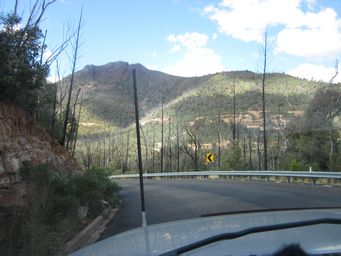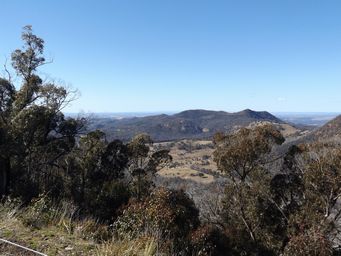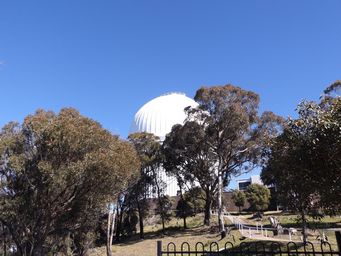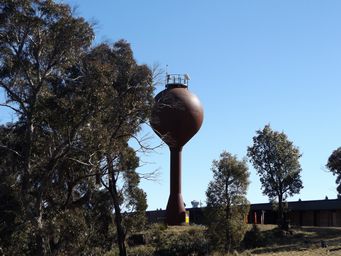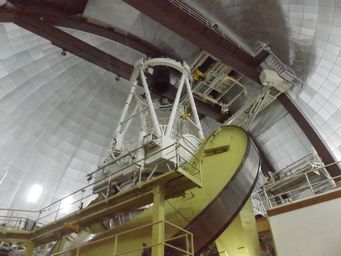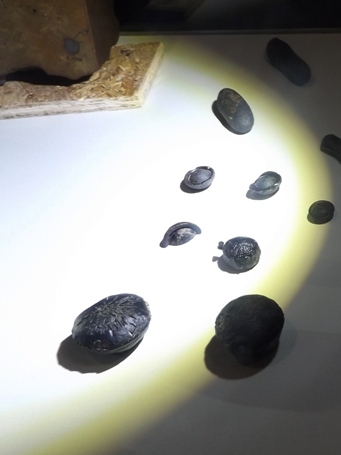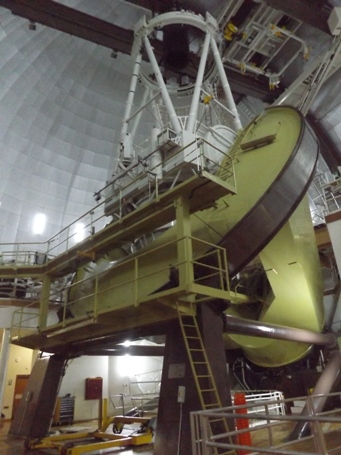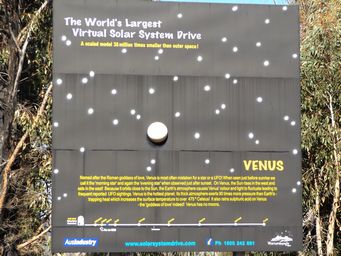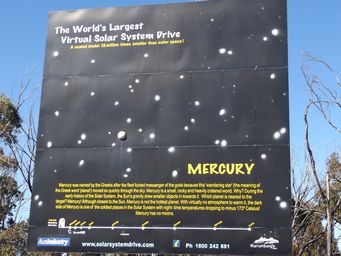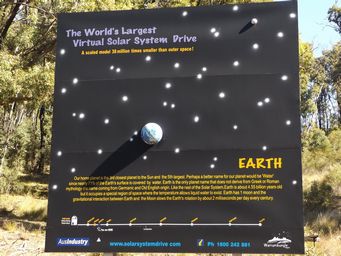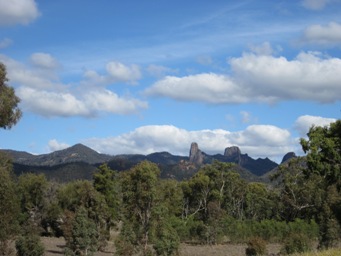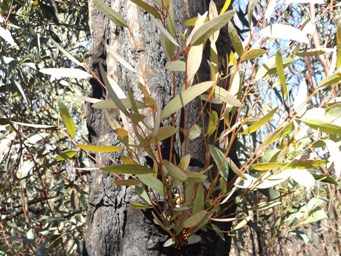Australia So Much to See
New South Wales - Warrumbungle National Park
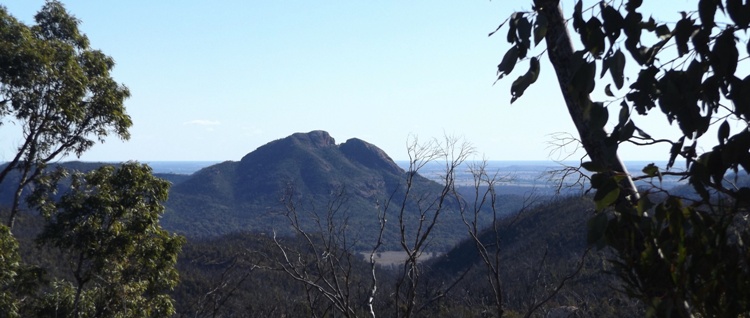
With the tempting wonders of the Warrumbungle National Park in our sights, we left our very pleasant base at Camp Cypress, Baradine,
and headed south through cropping land. We passed through Bugaldie, which was practically a ghost town with the general store
and fuel outlet appearing long closed and only a few houses remaining. The railway line and station were closed in 1976.
Little more than two kilometres further south, the former Duke of Wellington Inn from Cobb and Co coaching days is a well preserved
heritage building, now used as a farm house. The Duke of Wellington is one of very few surviving coaching inns in the region. As
a private residence this is not open to the public.
The terrain became hillier as we neared Coonabarabran, from where we turned west along John Renshaw Parkway, heading into the Warrumbungle National Park. We headed past the turnoff to Siding Spring Observatory and Whitegum Lookout, needing to park our caravan at the Camp Blackman camping area before venturing off the main road. There is a caravan parking bay at the start of the road up to the Observatory for those who just want to visit this while passing through the park.
A major fire in January 2013 had destroyed the Visitor Centre, so a temporary visitor centre was placed near the Camp Blackman campground while a replacement centre was being constructed (since opened). This fire burnt out most of the park, and damaged some of the buildings at Siding Spring Observatory.
Camp Blackman is at the site of the former Belougery Station homestead which
was owned by the Blackman family. The station was incorporated into the Warrumbungle National Park in 1960. The park was
commenced in 1953 with the acquisition of Alfred Pincham’s station.
However, if severe bushfires are beyond the threshold of what plants and animals have evolved to tolerate, species can be lost and
permanent changes result. Hence the January 2013 bushfires in Warrumbungle National Park became the focus of a major research
and recovery program by the former NSW Office of Environment and Heritage, now the Department of Planning, Industry and Environment.
As
part of the ongoing recovery of the park, the former NSW Office of Environment and Heritage funded and implemented a $1.3 million
research and restoration program that ran until 2016.
Siding Spring Australian National University Observatory at summit of Mount Woorut and in the eastern edge of the Warrumbungle National Park is a must to visit. Allow a day. Open to visitors between 10 am and 4 pm Monday to Saturday, excluding public holidays and on severe fire danger days.
For a small fee of $5.50 per person ($3.50 concession card holders and children)
visitors can access the display room, with information boards and models of telescopes from around the world and other astronomy facts. The is a set of scales where you can compare the weights of planets of our solar system, and the sun. There are two video rooms
screening videos including the search for the of the universe and stars, and all matter, with mind boggling numbers.
There is a café offering snacks or lunch. Once again, we had brought a picnic lunch to enjoy while viewing the expanse of the
Warrumbungle National Park from this high vantage point, so only had coffee at the Dome Café.
There are over 50 telescopes over the 151 hectare site on Mount Woorut at Siding Spring. The largest dome, which houses the
Anglo-Australian Telescope, can be seen from long distances in many directions.
Scientists estimate that
more than 100 tons of meteoritic material falls to Earth each day. Some of these fragments are on display at the observatory
visitor rooms. At left Tektites on display, showing striations from the journey through the atmosphere.
Volcanic activity between 13 and seventeen years ago created the spires and cores that now dominate the Warrumbungle skyline, exposed
by erosion over millions of years.
The skyline at right as seen from Camp Blackman, with Belougery Spire and Crater Bluff
dominating from this angle.
Since opening in 1964, The Australian National University has operated the observatory site hosting research telescopes from the ANU's Research School of Astronomy and Astrophysics (RSAA), Las Cumbres Observatory (LCO) and many other institutions from around the world.
The Giant Magellan Telescope is a 25 metre telescope in the Atacama Desert in Chile. This 15 storey structure has seven mirrors,
each 8.4 metres in diameter, which reflect onto seven secondary mirrors. A hologram on display gives us an insight into this
telescope.
Guided tours of the observatory can be booked, costing $25 per person ($18 concession card holders and children). In this 90 minute walking tour of Australia’s largest optical telescope, your guide will share the history of this site and tell of some of the mysteries of our universe it has helped unlock.
Rest areas along a number of roads leading to Siding Spring Observatory feature the planetary theme.
Bushfires Warrumbungle National Park in 2013 were the largest and most intense on record for the park. Starting on 12th January,
the fires burnt almost 90 per cent of the park.
Bushfires are a natural need for renewal in the Australian bush, and are required
by hundreds of native plants to stimulate them to germinate or flower, or to compete against other more dominant species. Fire is
also essential to maintain the habitat and resources of many native animals.
Tektites are small bodies composed of black, green, brown, or grey natural glass formed from terrestrial debris ejected during meteorite impacts.
